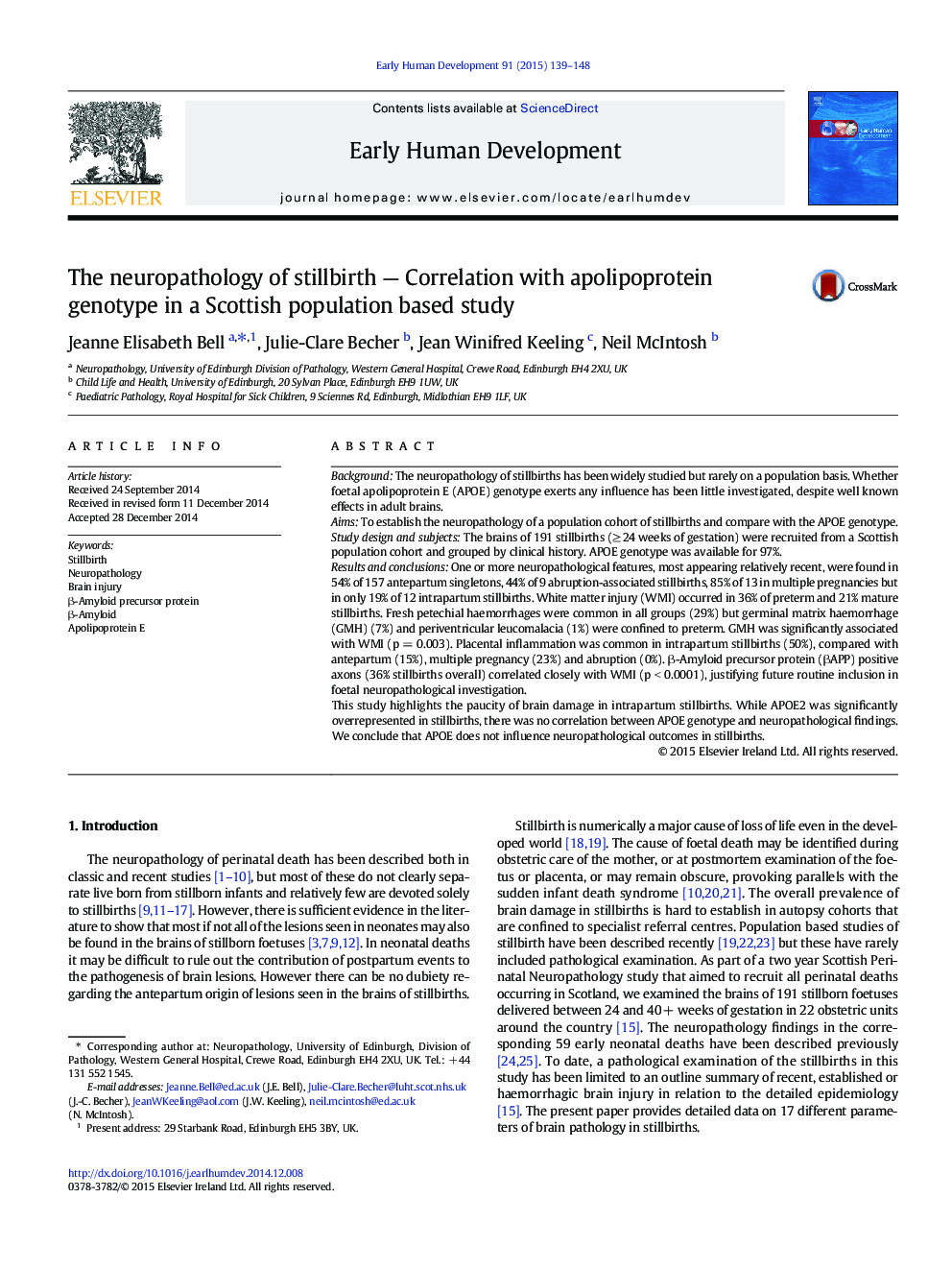| Article ID | Journal | Published Year | Pages | File Type |
|---|---|---|---|---|
| 3916467 | Early Human Development | 2015 | 10 Pages |
•The paper compares neuropathology findings with APOE genotype in a population cohort of 191 stillbirths.•Multiple pregnancy stillbirths show the most brain damage, followed by antepartum, abruption, then intrapartum stillbirths.•In most cases the neuropathological findings appeared relatively recent, particularly in intrapartum deaths.•β-Amyloid precursor protein positive axons (36% stillbirths overall) correlate closely with white matter injury (p < 0.0001).•APOE2 was significantly overrepresented in stillbirths but APOE genotype did not correlate with neuropathological findings.
BackgroundThe neuropathology of stillbirths has been widely studied but rarely on a population basis. Whether foetal apolipoprotein E (APOE) genotype exerts any influence has been little investigated, despite well known effects in adult brains.AimsTo establish the neuropathology of a population cohort of stillbirths and compare with the APOE genotype.Study design and subjectsThe brains of 191 stillbirths (≥ 24 weeks of gestation) were recruited from a Scottish population cohort and grouped by clinical history. APOE genotype was available for 97%.Results and conclusionsOne or more neuropathological features, most appearing relatively recent, were found in 54% of 157 antepartum singletons, 44% of 9 abruption-associated stillbirths, 85% of 13 in multiple pregnancies but in only 19% of 12 intrapartum stillbirths. White matter injury (WMI) occurred in 36% of preterm and 21% mature stillbirths. Fresh petechial haemorrhages were common in all groups (29%) but germinal matrix haemorrhage (GMH) (7%) and periventricular leucomalacia (1%) were confined to preterm. GMH was significantly associated with WMI (p = 0.003). Placental inflammation was common in intrapartum stillbirths (50%), compared with antepartum (15%), multiple pregnancy (23%) and abruption (0%). β-Amyloid precursor protein (βAPP) positive axons (36% stillbirths overall) correlated closely with WMI (p < 0.0001), justifying future routine inclusion in foetal neuropathological investigation.This study highlights the paucity of brain damage in intrapartum stillbirths. While APOE2 was significantly overrepresented in stillbirths, there was no correlation between APOE genotype and neuropathological findings. We conclude that APOE does not influence neuropathological outcomes in stillbirths.
